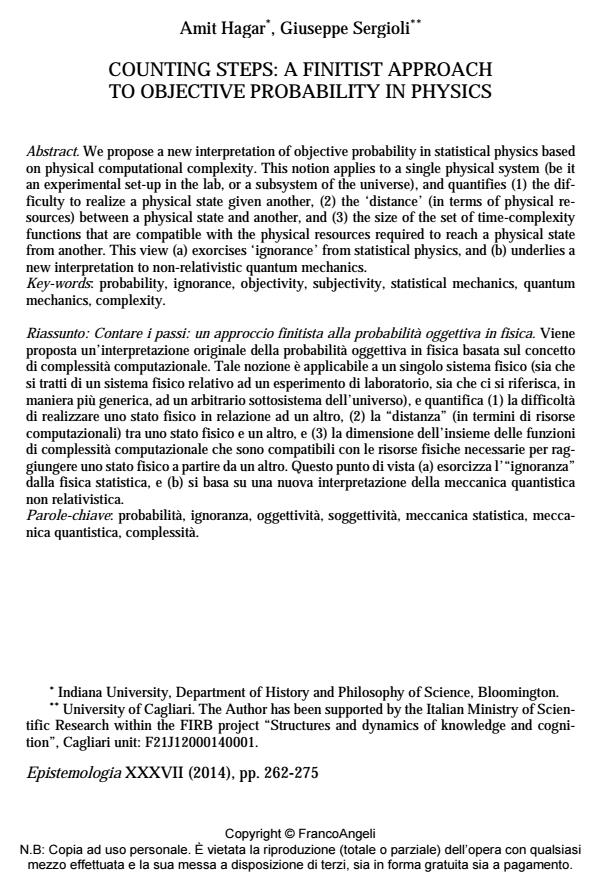Contare i passi: un approccio finitista alla probabilità oggettiva in fisica
Journal title EPISTEMOLOGIA
Author/s Amit Hagar, Giuseppe Sergioli
Publishing Year 2015 Issue 2014/2
Language English Pages 14 P. 262-275 File size 96 KB
DOI 10.3280/EPIS2014-002006
DOI is like a bar code for intellectual property: to have more infomation
click here
Below, you can see the article first page
If you want to buy this article in PDF format, you can do it, following the instructions to buy download credits

FrancoAngeli is member of Publishers International Linking Association, Inc (PILA), a not-for-profit association which run the CrossRef service enabling links to and from online scholarly content.
We propose a new interpretation of objective probability in statistical physics based on physical computational complexity. This notion applies to a single physical system (be it an experimental set-up in the lab, or a subsystem of the universe), and quantifies (1) the difficulty to realize a physical state given another, (2) the ‘distance’ (in terms of physical resources) between a physical state and another, and (3) the size of the set of time-complexity functions that are compatible with the physical resources required to reach a physical state from another. This view (a) exorcises ‘ignorance’ from statistical physics, and (b) underlies a new interpretation to non-relativistic quantum mechanics.
Keywords: Probabilità, ignoranza, oggettività, soggettività, meccanica statistica, meccanica quantistica, complessità
- Quantum, Probability, Logic Amit Hagar, pp.305 (ISBN:978-3-030-34315-6)
Amit Hagar, Giuseppe Sergioli, Counting steps: a finitist approach to objective probability in physics in "EPISTEMOLOGIA" 2/2014, pp 262-275, DOI: 10.3280/EPIS2014-002006